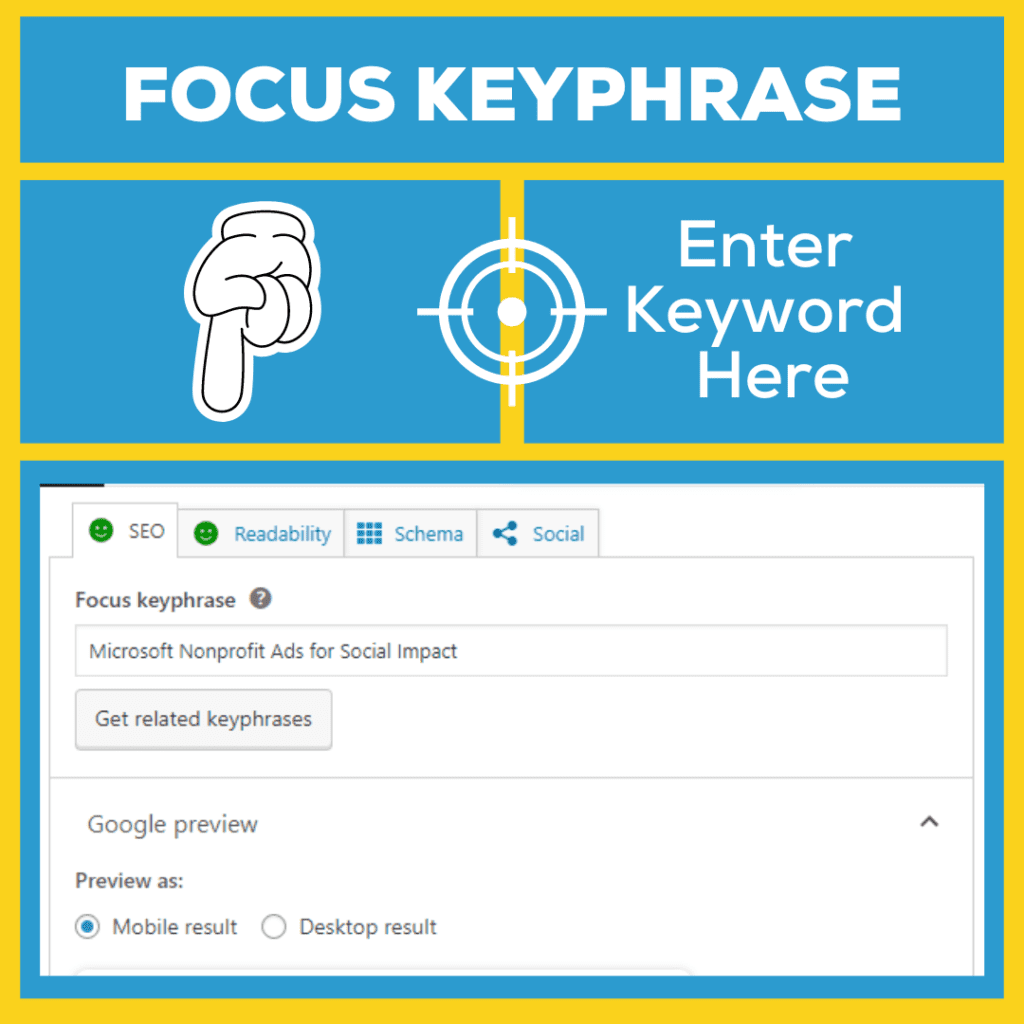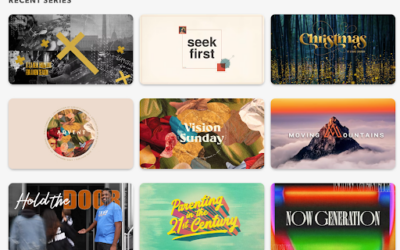The universe screams that content is life, that blogging for your church is cheap, fun and will help your congregation grow. The same may be said of marriage, but simple isn’t the same as easy and getting started is, well–it’s just the beginning.
This is the church blogging for beginner’s post. I’ll tell you the basic pieces to get your church blog started, but the important thing I want you to know is that you have my permission to stink at the beginning. Your church will survive when you continue to screw up after you’ve been blogging for a while. And even if five years from now, you tell droves of people to show up at the wrong place, it’s okay; God’s grace is bigger than any typo.
If your church as limited time and resources, if writing isn’t your jam, if you just need to start somewhere, anywhere, and run with it, my friend, I get it. I’m the same way with math and cooking. I’m here for you.
We’ll cover three broad topics with just the essentials of church blogging: Keyword research, writing, and SEO elements. I’ll also give you a downloadable checklist and Yoast cheat sheet. That’s enough for now. You’ll learn and build as you go, and we’ll be here for you then, too. So, grab a (small) cup of coffee and let’s get started.
Keyword Research
Keyword research can feel like the root canal of blogging, but it doesn’t have to be. At its core, Google is an information match-making service. The bridge between information seeker and knowledge provider is the keyword. A relevant keyword helps the world’s busiest matchmaker find the perfect match.
The keyword really isn’t even a word. It’s usually a phrase. A keyword is simply what someone types in the search bar to learn about or find something online, so begin your keyword research in your reader’s head. Ask yourself, if I wanted to learn about ___, what would I search for?
Enter your phrase (and a few variations) into a keyword research tool such as Google Keyword Planner. You’ll get a list of related suggestions along with some data. We’ll talk about the most relevant information so you can get started: volume, cost per click, and competition.
Volume
The first number to look at is volume. The volume is how many people search Google using the associated keyword phrase.
While it makes sense to write for a keyword many people are searching for, you’ll find that the highest volume searches are the most broad, and therefore, not very useful.
For example, the search word prayer will have a much greater volume than prayers for busy mothers, but if you use the keyword prayer, your blog will be on Google’s page 567 because there’s so much content about prayer online.
A broad keyword doesn’t help you reach your reader, either. The word prayer is just where the busy mom who needs your post begins her search. As Google gives her options, she’ll funnel down until she finds what she didn’t know she really needed. Your keyword will be in your title and description, and the tired mama will relate with it when she sees it.
Cost Per Click
The second is cost per click (CPC). CPC will only be relevant if your church plans to pay for advertising, like Google Ads, to help you rank for a keyword. When you search on Google, the first few results are usually ads. Businesses pay to rank at the top of any search engine, so every time someone clicks an ad link, the business pays the search provider advertising dollars. The CPC field tells you how much each click will cost if your church is using an ad grant.
Generally, the lower the CPC is, the better. If you’re using free ad credits with the Google Ad Grant or the Microsoft Ads for Social Impact Grant, then you can focus on relevant keywords without being as concerned about the CPC.
Side note: With CPC in mind, I try to avoid the ads when I know what I’m looking for so I can save the business a little money. I’ll either type the URL into the search bar or scroll down just a little to find their regular, organic website listing.
Competition
The last metric to note is competition. It’s a measure of how many other writers are trying to rank for the same keyword. If there’s a lot of volume and low competition, then you’ve found the keyword pot of gold buried with the needle in the haystack.
Low volume and low competition can work if the keyword accurately reflects what your blog is about because you’d rather reach 100 people who really need your content than 1000 who don’t. The point is, look for a balance between volume, CPC, and competition.

Pro Tips: Felt Needs and Due Diligence
People search first based on how they feel, so we recommend keywords for felt needs, such as how do I overcome ____, what does the Bible say about ____, or Bible verses about ______.
To be successful with your keyword research, all you have to do is read your reader’s mind and crack Google’s new weekly algorithm, and the underground web bots will bless all your content with instant viral visibility.
Or not.
Keyword research is an art, and analysis paralysis is real. Do your due diligence, move on, and trust Jesus to get the content to whomever He knows needs it. He’s a little smarter and more powerful than Google, anyway.
Plan Your Piece
My husband’s weekend paradise includes freezing in a deer stand watching the squirrels and hoping to see a buck that rarely comes. My happy place is in the warm house with a candle, piano music, creativity, and a little Jesus. Each of us thinks the other is a glutton for punishment, but every pursuit includes struggle.
I believe perfection is every writer’s frozen squirrel, especially for beginners. The most liberating moment in my writing career was the day I heard an accomplished author describe her writing process as vomiting words on the page and then going back to rearrange the chunks. In fact, I usually begin writing with my eyes closed. I type as I think, let auto correct do its thing, and the first draft is a surprise. It’s the only way I can be truly free to just get my thoughts out.
In this section, I’ll give you four writing tips, but please know the creative process is never linear. Your process is as unique as your prints on the keyboard, and it will evolve. Your prize piece today will make you cringe a year from now. Honestly, I’d be more concerned if it didn’t.

Consider Your Who and Why
My first tip is to consider your audience and the reason for writing. There are a few things to keep in mind as you do so. First, as ministries, we know literally everyone needs Jesus, but when you write to everyone, you’ll relate to no one.
Your reader may be a little different for each piece. For example, my reader for this piece is a busy, church professional who is overwhelmed by the need to begin blogging. I’m thinking of you as I go through my writing process, beginning with the vomit stage and ending the 5-star literary cuisine you crave (you’re welcome).
What Is the Main Point?
Second, begin your piece with one goal in mind. What is the one thing, the main point, you want the reader to get out of your piece? For this post, I told you the one thing I want you to know is that it’s fine to just start, however imperfectly. As a writer, I want to empower you to hurl words upon the page, then sweeten and spice the relevant chunks later. Fortunately, you can leave the mop in the closet, as the Delete key works well for the irrelevant words you spewed when no one (perhaps not even you) was looking.
Use the Keyword Throughout the Post
Third, as you’re rearranging your alphabet soup, sprinkle in the keyword here and there. First in the title, then in a heading or two, a few variations dolloped around in the text with the final garnish in the conclusion and topped off with a few images. Voilà! You’ve got a balanced church blog post to satisfy both search engines and readers.
Proofread
And last, edit and proofread. Yes, I know only us ultimate word nerds enjoy such tedium, but it’s necessary. Tools like Grammarly and Pro Writing Aid are there to help. I also recommend reading it aloud before you finally publish the piece for your whole church to see. Your mother was right when she said you’d be surprised at what you hear when you really listen to yourself talk.
Pro Tips: Presentation
Just like with Christmas dinner, presentation determines whether people will actually consume your creation, so we’ve got a few bonus tips to make your post a little easier to digest.
- Make the piece for your church blog at least 800 words so there’s enough meat to leave your reader satisfied. In fact, research shows that blog posts between 2,100 and 2,400 words rank the best. But we realize time is a factor for all church staff!
- Keep your sentences and paragraphs short so readers don’t choke on too much information.
- Include subheadings so it’s easy for grazers to skim through the piece.
- Images scattered throughout your post will create a more relaxed atmosphere.
SEO Elements
Remember that keyword you sprinkled through your writing? Well, it’s more than just seasoning. The keyword is the yeast that helps your creation rise in relevant search results.
In this section, I’ll cover the four areas you want to include the keyword to help tell Google what your church blog is about. You can continue reading or watch our video.
You’ll need an SEO plug in. The screenshots in this section are of the Yoast plugin because that’s what we use. Other plugins look different, but the information you need is the same.
Focus Keyphrase
The most important place to put your keyword is the Focus Key Phrase field. That’s what tells Google what your actual keyword is.

Slug
The second place is in the Slug field, which is the unique part of the URL for each post. Type the keyword in the Slug field, and you’ll see it update in the URL field after the draft saves. When the post is published, you’ll see the URL matches the keyword. It’s really helpful for both Google and readers when the URL matches the keyword, so it helps your ranking.

Meta description
The third field is the meta description. People will see the meta description as the preview when your post appears in Google’s search results. The viewable text is limited, so the meta description should be short and include the keyword as soon as logically possible. The bar at the bottom will change color as the system detects you’ve inserted the keyword, when it’s long enough, and again when it’s too long.

Excerpt
The last field we’re going to cover is the excerpt. WordPress says it’s optional, but it is helpful to drive traffic to your church blog, because it’s another way to tell both search engines and your readers what the post is about. The excerpt shows up in places such as your church’s blog roll or in emails as the introduction to the post. You can use the meta description for the excerpt, but usually the excerpt is a little longer to help entice readers to click through.
Pro Tip: Remember Who is God
The green smiley face is a guide, not a god. Yes, you want it green, but if you’ve done all you can with a balance of SEO and reader experience, and it’s still a pouty orange, it’s okay. SEO is just as much an art as a science because reader experience comes first. Google knows when people use black hat tactics like keyword stuffing. SEO is a way to provide directions, it’s not the destination. Especially in ministry, at the end of the day, we’re all writing for Jesus, and He was providing people with what they needed long before Google was a thing.

Conclusion & Free Download
Most SEO blogging for beginners’ articles begin with platitudes like critical, and perfection, followed by optimized, and thorough, and end with easy, and that’s all there is to it!
Can I just be honest for a moment? Nothing about content creation is “critical” unless you’re writing a manual about how to build an airplane or a course for heart surgery, and the only thing that has ever been perfect is Jesus.
I know we’ve covered a lot of ground, and it can be a lot to remember, especially with all the other duties you handle for your church. So as promised, I’m pleased to provide you with a two-page PDF Church Blogging for Beginners download. The first page is a checklist covering every item we’ve discussed, along with plenty of space for notes. The second page contains the four Yoast graphics in this post.
My prayer is that you now feel empowered to make a screw up, chuckle at your silly self, take a few notes, and make a different mess of your church blog tomorrow. And my prayer for my team at Click Nonprofit is that if this blogging thing just isn’t for you, you’ll let us do it for you. But either way, we’re here to help amplify your church’s message.




